Ancient DNA lab maps
little-explored human lineages
Emory scholars study genetics of deep past to better understand
modern-day populations of the Americas
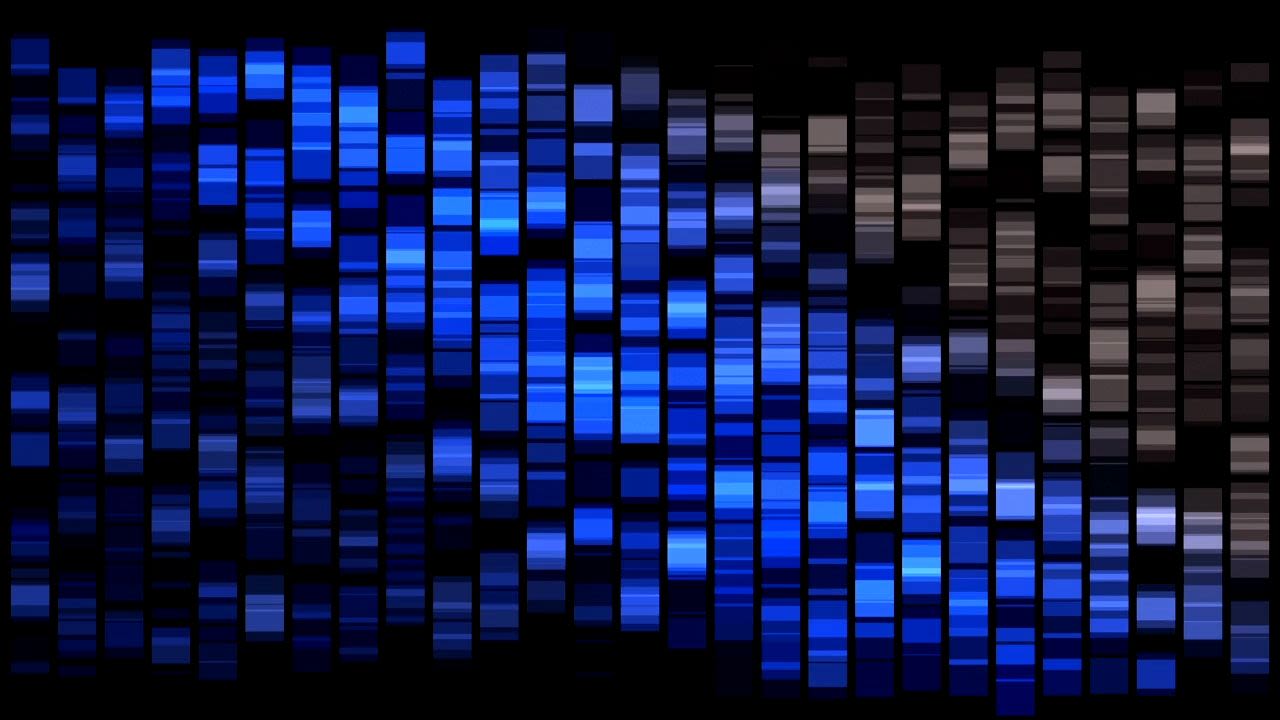
Emory junior Rosseirys "Ro" De La Rosa is helping analyze DNA that she extracted from ancient bones unearthed in Uruguay — the remains of an Indigenous people known as the Charrúa. “Very few remains of the Charrúa have been found,” De La Rosa says. “They were largely wiped out by colonialism and a lot of mystery surrounds them. Anything that we can learn is important.”
It may be possible to connect the ancient Charrúa to modern-day populations unaware of their link. “Culture matters,” De La Rosa says. “Leaning about your own culture gives you a sense of unity and connection that you can pass down to others.”

Ro De La Rosa in the anteroom of the Emory ancient DNA lab last January. This semester, from her family home in Massachusetts, she's writing computer code needed for the analysis of the DNA she extracted and prepared early in the spring semester.
Ro De La Rosa in the anteroom of the Emory ancient DNA lab last January. This semester, from her family home in Massachusetts, she's writing computer code needed for the analysis of the DNA she extracted and prepared early in the spring semester.
Graduate student Yemko Pryor is assisting on a project involving the ancient people of Peru. She’s comparing the genetics of populations from the coast to those from high in the Andes. “We’re looking for changes in genes that may have allowed people to adapt to living in extreme high altitude,” Pryor explains. “Any variances in genes related to lung function, for instance, may give us a new insight into human evolution.”
Meanwhile, Pryor is also developing a passion project for her PhD in Laney Graduate School’s Genetics and Molecular Biology Graduate Program. “There is a large gap in knowledge and representation in genetic datasets for people of African ancestry in the Americas,” she says. “I’m working to change that. I want to explore how the history of racism and oppression, beginning with the trans-Atlantic slave trade, may have affected peoples’ physiologies.”
De La Rosa and Pryor are members of the Lindo Ancient DNA Laboratory, headed by John Lindo, Emory assistant professor of anthropology. The state-of-the-art facility, funded by major grants from National Geographic Explorer and the National Science Foundation, opened in January in Emory’s Psychology and Interdisciplinary Sciences Building. It is one of a handful of ancient DNA labs in the country and one of the few in the world involved in every step of the complex process of solving mysteries surrounding ancient remains.
“We build projects from the ground up,” Lindo says. “We extract DNA from ancient remains here, sequence it here, analyze it here, and publish the results.”

Most previous ancient DNA work involves people of European ancestry. A focus of the Emory lab, however, is exploring how environmental changes — including those caused by European contact — affected the biology of Indigenous and other populations of the Americas.
“Our work can connect people to ancestries they potentially don’t know about,” Lindo explains. “It can also give them insights into how historic, and even prehistoric, events may be affecting them today, especially in terms of health risks and disparities.”
Lindo establishes relationships with local and Indigenous people who decide whether unearthed remains from their communities will be analyzed and how the data will be used. Visiting scientists and scholars from these communities will come to the Emory lab, working alongside Emory scientists and students, exchanging knowledge, insights and perspectives.
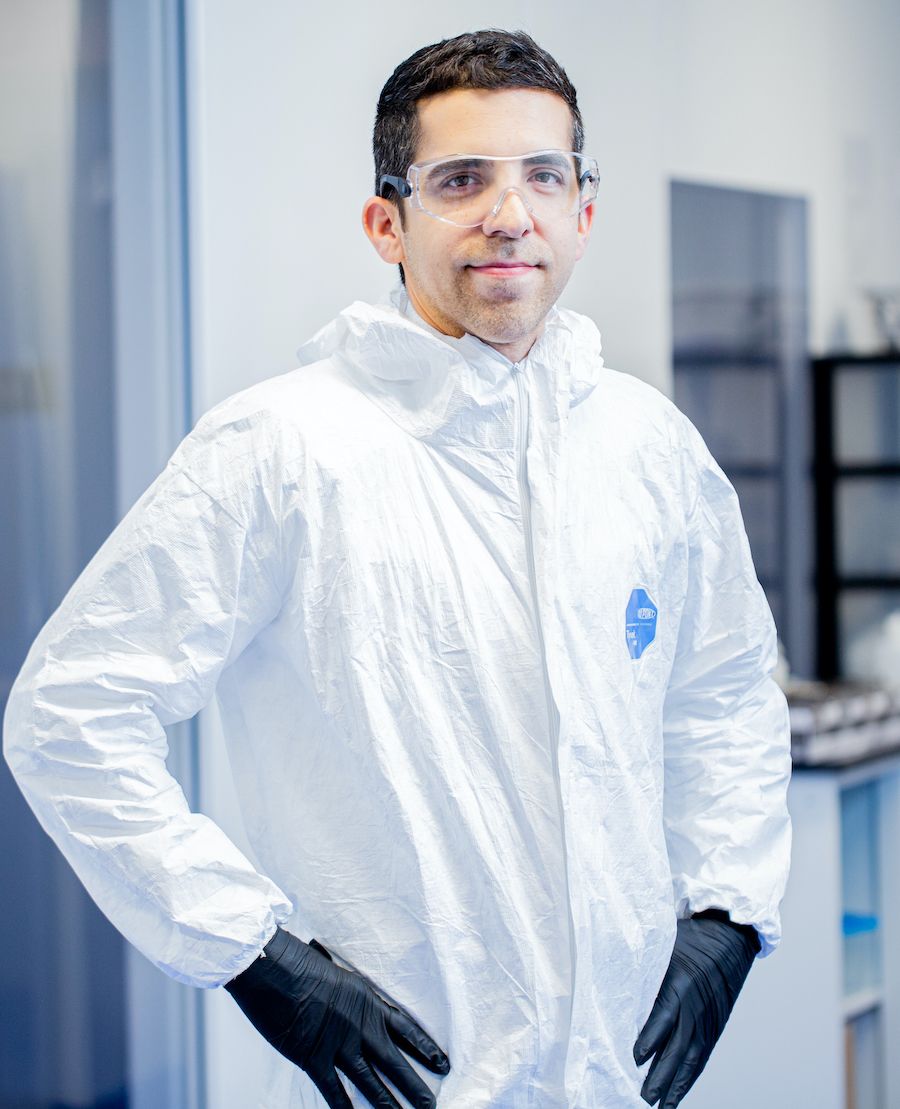
“The ability to trace your ancestry back hundreds, and even thousands, of years is something that people of European descent now take for granted," Lindo says. "There has been much less data available to allow those with Indigenous ancestry to do so.”
“The ability to trace your ancestry back hundreds, and even thousands, of years is something that people of European descent now take for granted," Lindo says. "There has been much less data available to allow those with Indigenous ancestry to do so.”
“The history of colonialism in the Americas is often an ugly scenario,” Lindo says. “And there have been cases of researchers completely bypassing Indigenous communities, taking ancient remains from sites and analyzing them without permission. I consider that a form of neocolonialism. Imagine someone raiding your family cemetery and not asking you if it’s okay.”
The lab is currently analyzing remains unearthed in Brazil that are around 10,000 years old, near the date when people first arrived in South America. That project will take on open questions surrounding how the continent was originally populated.
“We want to give individuals and communities the potential to see how their genomes may connect to these populations before European contact,” Lindo says.
Lindo has also established relationships with 10 different Indigenous groups in North America, gaining permission from several hundred tribal community members and their leaders to analyze the evolutionary history of their genomes. “This will be the first time that whole genome studies have been done for Native Americans from throughout North America,” Lindo says. “We can learn more about the story of the first settlers of the Americas as they split off into different populations, including migration paths and how they adapted to different environments.”
DNA is the hereditary material of almost all living organisms.
DNA stores information in four chemical bases:
Adenine (A)
Guanine (G)
Cytosine (C)
Thymine (T)
They link up to form base pairs.
The order, or sequence, in which the base pairs appear spells out the code for a particular organism.
Lindo’s own roots are in South America. His parents both emigrated from Colombia to the United States where he was born. Growing up in Queens, New York, he was fascinated with all things scientific, especially paleontology and evolution.
The movie “Jurassic Park” came out in 1993, while Lindo was still in high school. He vividly recalls the “Mr. DNA” cartoon sequence. That’s the bit when the creator of the Jurassic-era theme park explains how he obtained 100-million-year old dinosaur blood from mosquitoes preserved in fossilized tree sap, extracted DNA, and used genetic engineering to populate an island with T-Rexes and velociraptors.
Watch the Mr. DNA sequence from "Jurassic Park."
Although “Jurassic Park” stretched far beyond the boundaries of scientific fact, it introduced the concepts of ancient DNA and genetic research to the public in an engaging way. “I loved that movie,” says Lindo, who now uses a T-Rex as a logo for his lab, in a nod to this early inspiration. “Jurassic Park was a big driver for me to start thinking about working in ancient genetics."
The next year, in 1994, a real-life scientific triumph — the recovery of DNA from woolly mammoth bones unearthed in Siberia — fueled excitement in the nascent field of ancient DNA analysis.
Advances in genomic technology rapidly drove more discoveries.
In 2001, an entire human genome of 3.2 billion base pairs was sequenced.
The project cost billions and required the work of dozens of labs.
By 2007, new techniques allowed sequencing of a human genome within hours at a far lower cost.
Ancient DNA research faced a special problem: Fossil DNA is often degraded into fragments.
Computer algorithms can now find where the fragments overlap and piece them back into the right order.
These advancements set the stage for a 2010 milestone: DNA from 40,000-year-old Neanderthal remains showed that the species had interbred with Homo sapiens after they left Africa, making many modern humans part Neanderthal.
Lindo, who studied chemistry as an undergraduate before going on to get a PhD in anthropology at the University of Illinois, was in graduate school when the Neanderthal paper came out. “That’s when ancient DNA research really came into its own,” he says.
The Emory facility is well-positioned to keep driving the field forward.
“I think this lab is one of the most high-tech and best planned-out ancient DNA labs in the country, if not the world,” says Amanda Owings, a post-doctoral research fellow who trained extensively at another ancient DNA lab before joining the Emory facility.
The space is large, at 860 square feet, and built with sealed metal walls to help maintain high positive air pressure. The ventilation system filters incoming air, sieving out invisible particles, before the air flows through the lab and gets pushed back out.
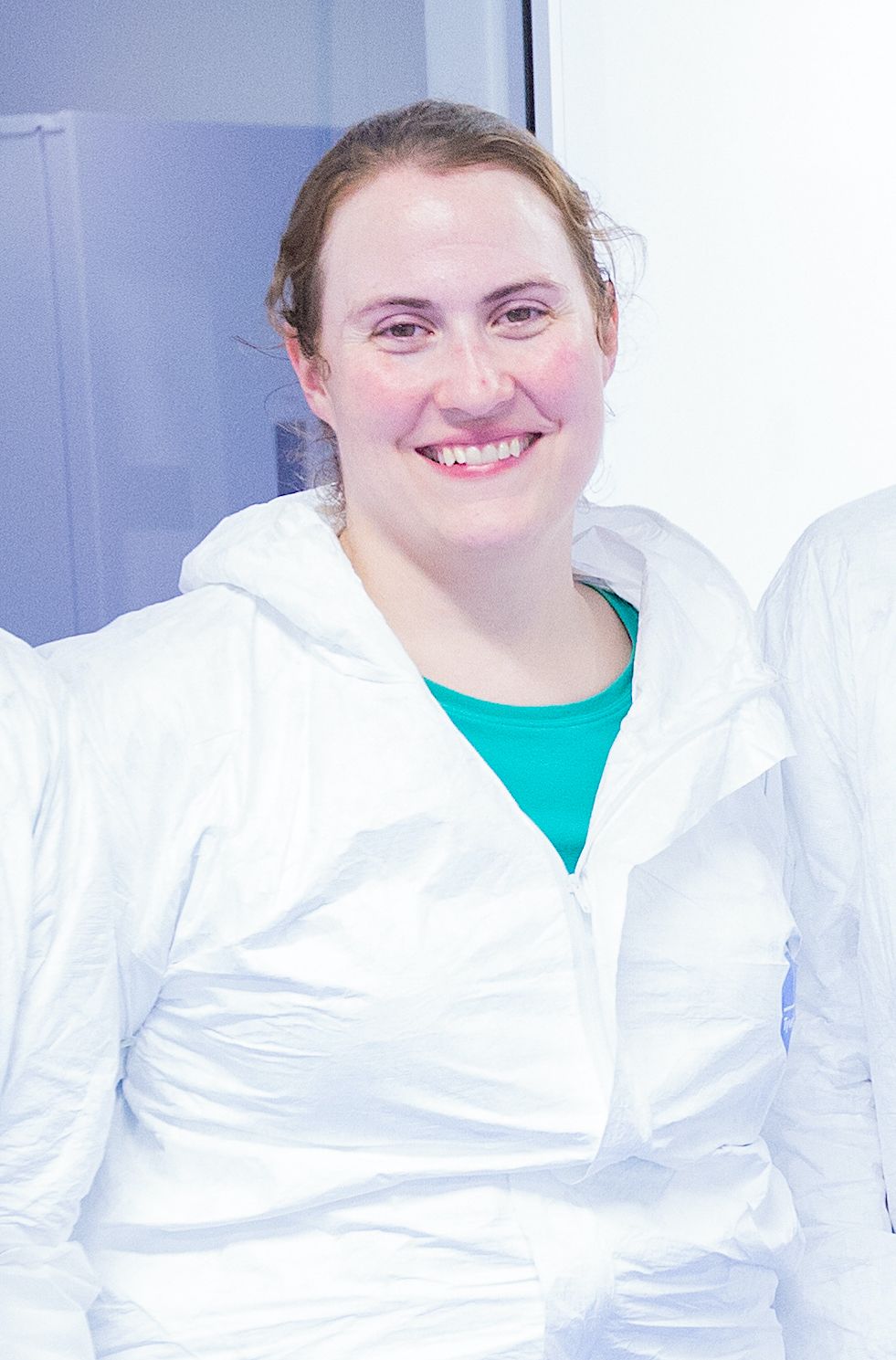
Amanda Owings, a post-doctoral research fellow, trains students in ancient DNA laboratory techniques. "Ancient DNA analysis is like having a time machine that lets you look into the past.," she says.
Amanda Owings, a post-doctoral research fellow, trains students in ancient DNA laboratory techniques. "Ancient DNA analysis is like having a time machine that lets you look into the past.," she says.
The ceiling is fitted with disinfecting ultraviolet lights that switch on at night — a backup measure to help ensure the lab remains sterile. In an anteroom, separated from the lab space by an air lock, researchers must suit up in full personal protective equipment (PPE). They don two pairs of gloves, full-body Tyvek suits, head covers, masks and goggles.
Without such measures “the contamination risk is high,” Owings explains. The air in an ordinary room teems with dust and other tiny particles, including dead skin cells that people naturally shed. “If DNA from a living person contaminated any of the ancient remains, that would be extremely detrimental to our work,” she says.
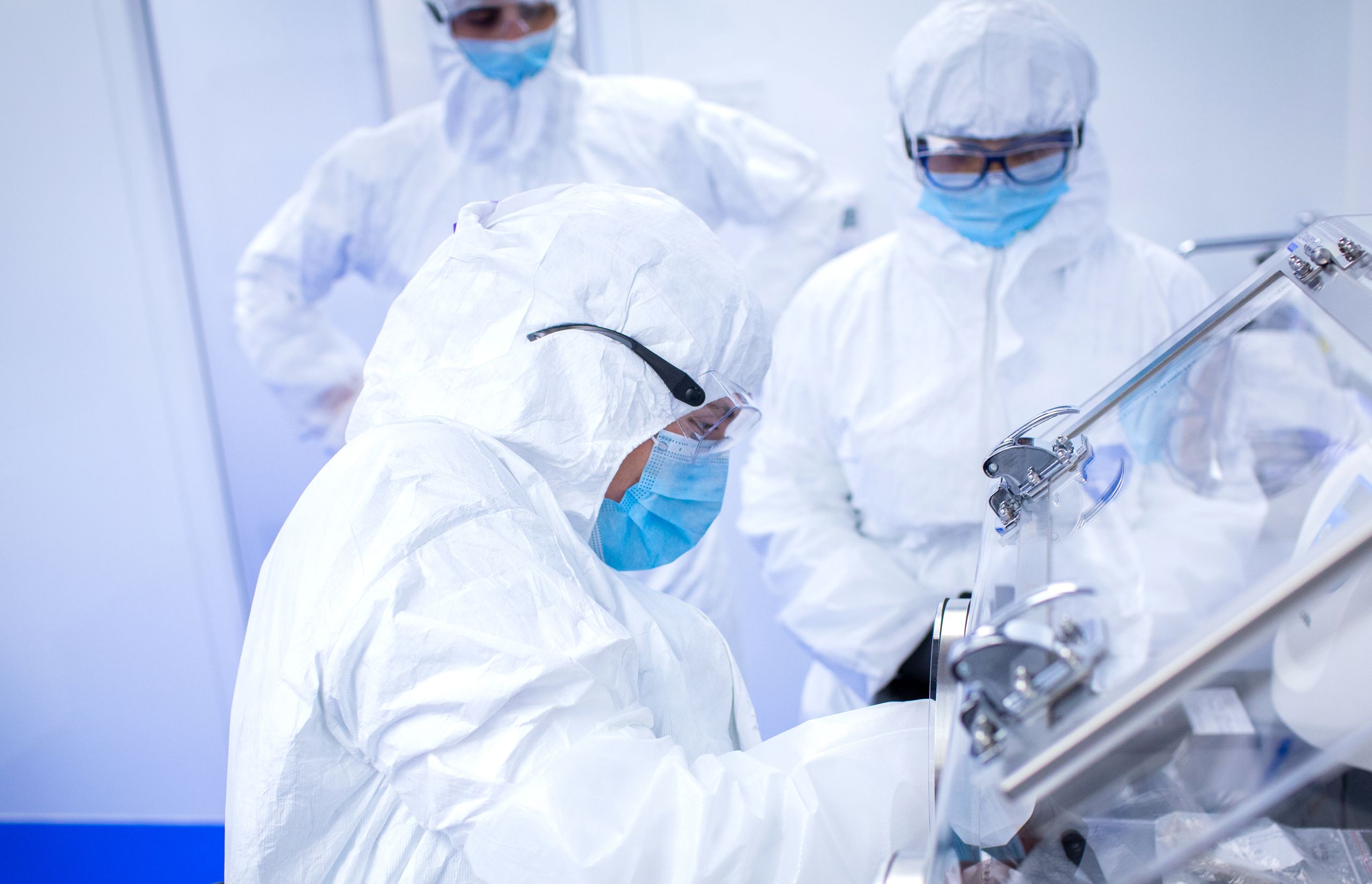

Owings trains students in each of the painstaking steps involved in DNA extraction and analysis, starting with drilling into the remains to collect a bit of the bone in the form of powder. Ancient skeletons tend to be fragile. The bones are often in small pieces, such as individual teeth — one of the sturdiest parts of a human body.
“Drilling is one of the most difficult things to do because you need to be incredibly accurate, and you’re holding a sharp object that’s spinning rapidly near your fingers,” Owings says.
“The first time I did it I was terrified,” says Ro De La Rosa, who is majoring in anthropology and human biology with a minor in African American studies. She drilled several teeth belonging to the ancient Uruguayan remains early last spring semester, while she was still a sophomore. “You have to make small, circular motions with the drill and just take your time. You need to be respectful and not leave too big a mark in the remains, because they belonged to a person.”
The amount of bone powder needed is about 0.1 grams, similar to a dash of salt. The powder is collected into a small plastic tube and a chemical solution is added to break up the walls of the bone cells and release its DNA. The DNA must then be purified and prepared for analysis.
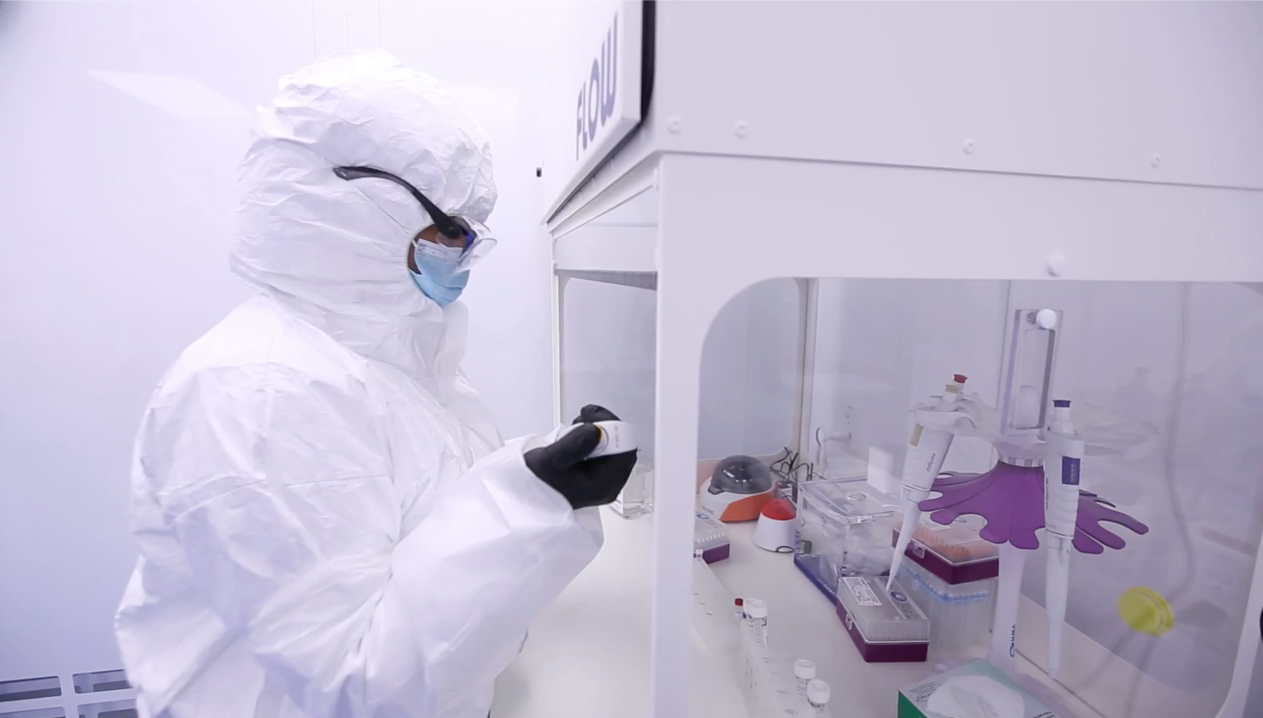
De La Rosa's parents both immigrated from the Dominican Republic to the United States, where she was born, and she speaks fluent Spanish. As a child, she often acted as an English-language translator for her mother. The two loved watching forensic crime TV shows, like “Bones,” in Spanish together.
De La Rosa, who identifies as Black while also cherishing her LatinX culture, plans for a career as a forensic anthropologist.
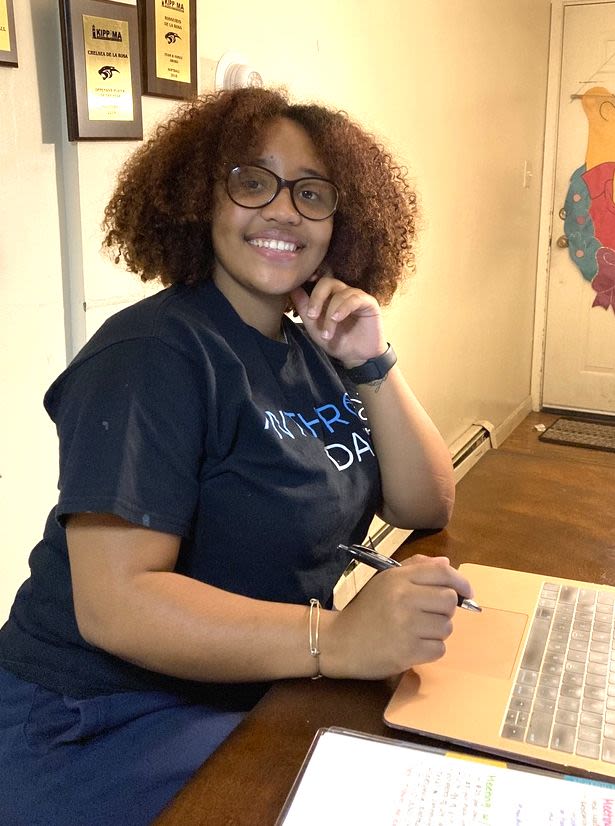
“I want to help people learn their cultural stories so they can share them with the world,” says De La Rosa, who is currently working on the Uruguay project remotely.
“I want to help people learn their cultural stories so they can share them with the world,” says De La Rosa, who is currently working on the Uruguay project remotely.
From her family home in Massachusetts, where she is spending the fall semester, De La Rosa is helping with computational analyses of the ancient DNA from the Charrúa remains unearthed in Uruguay. Virtually tapping into the power of Amazon’s supercomputers allows the researchers to assemble the chunks of DNA code they extracted from the remains into a sequence of 3.2 billion base pairs — a full human genome. The ancient genomes will then be compared with modern-day populations in South America to look for potential matches.
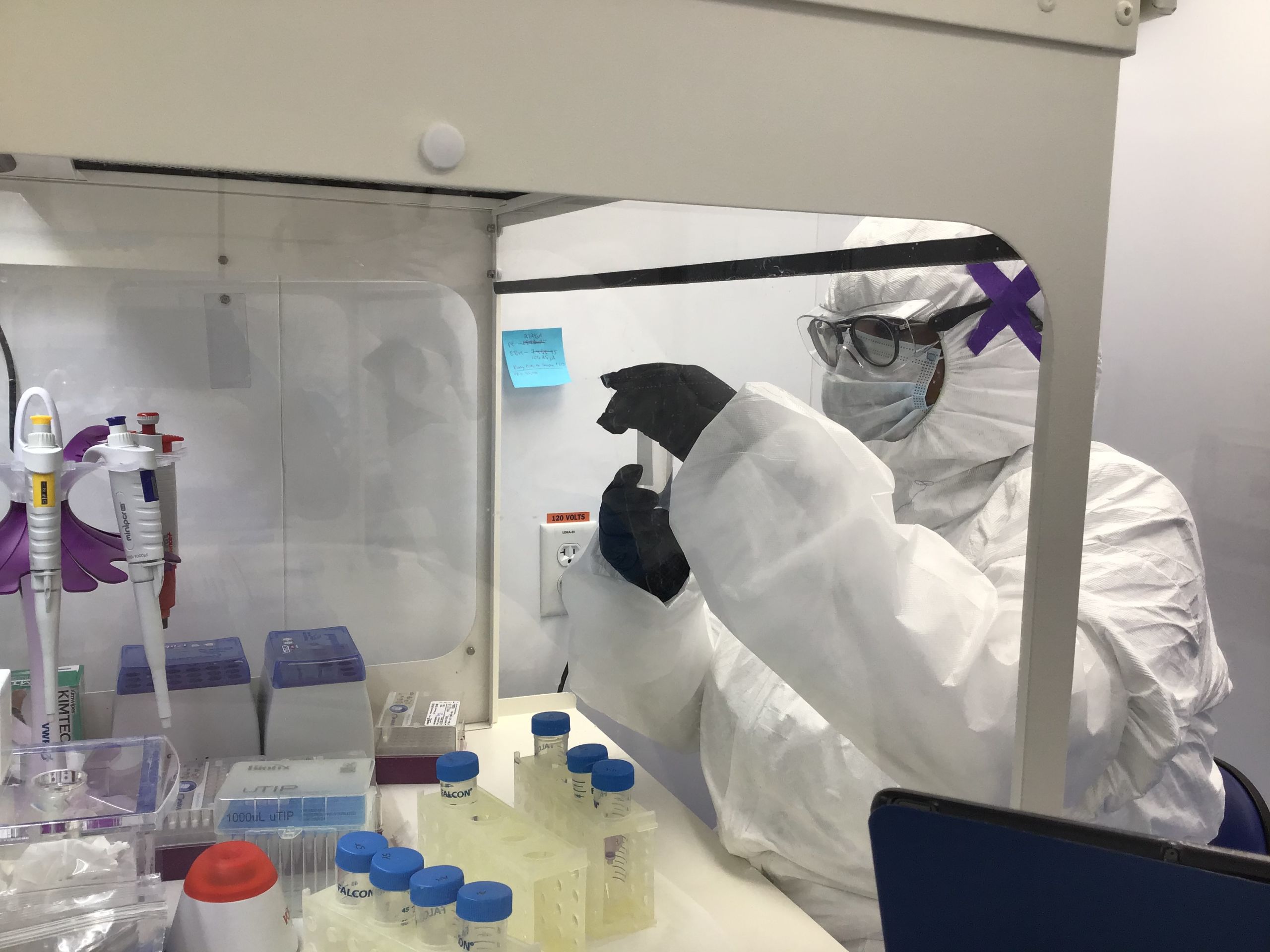
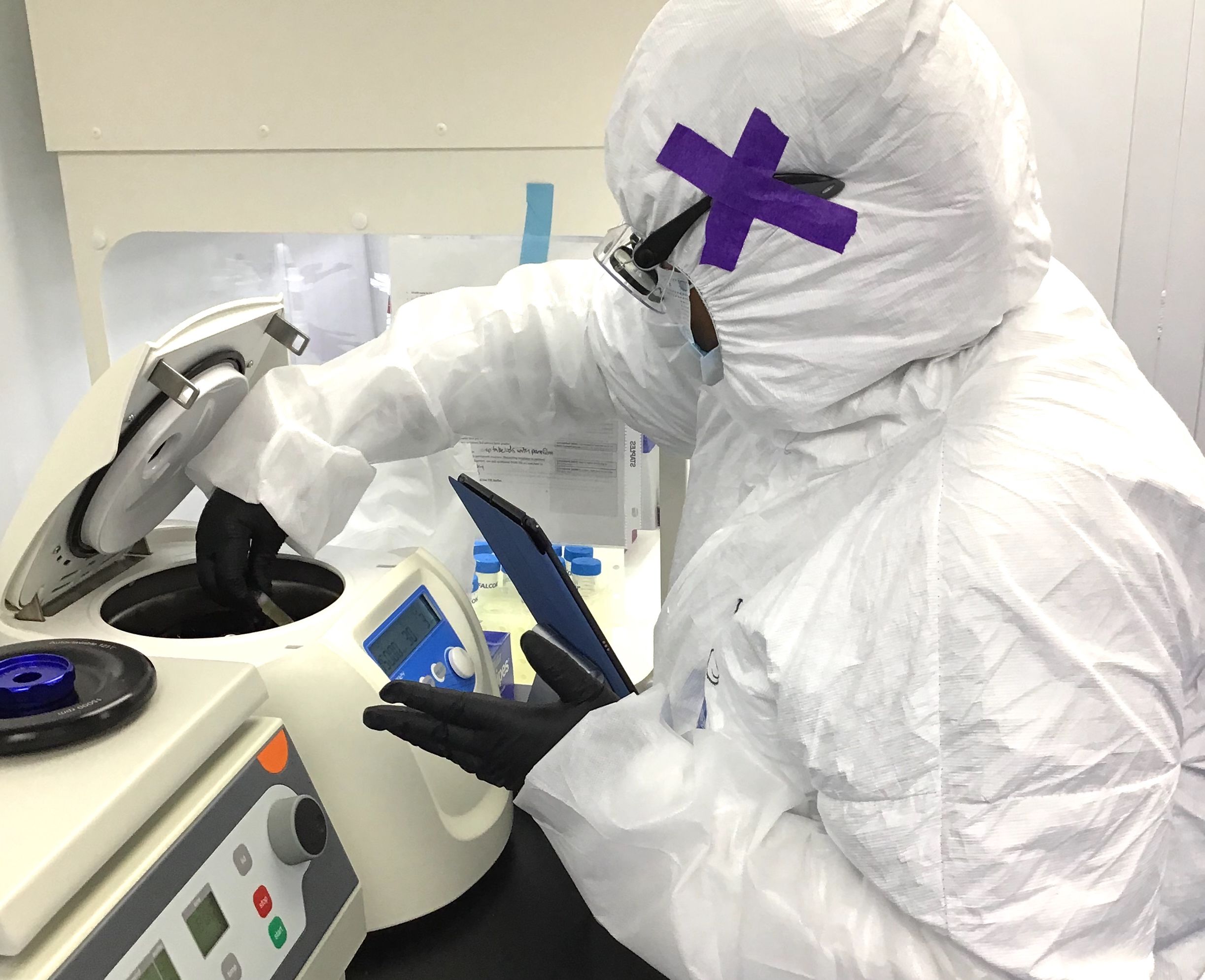
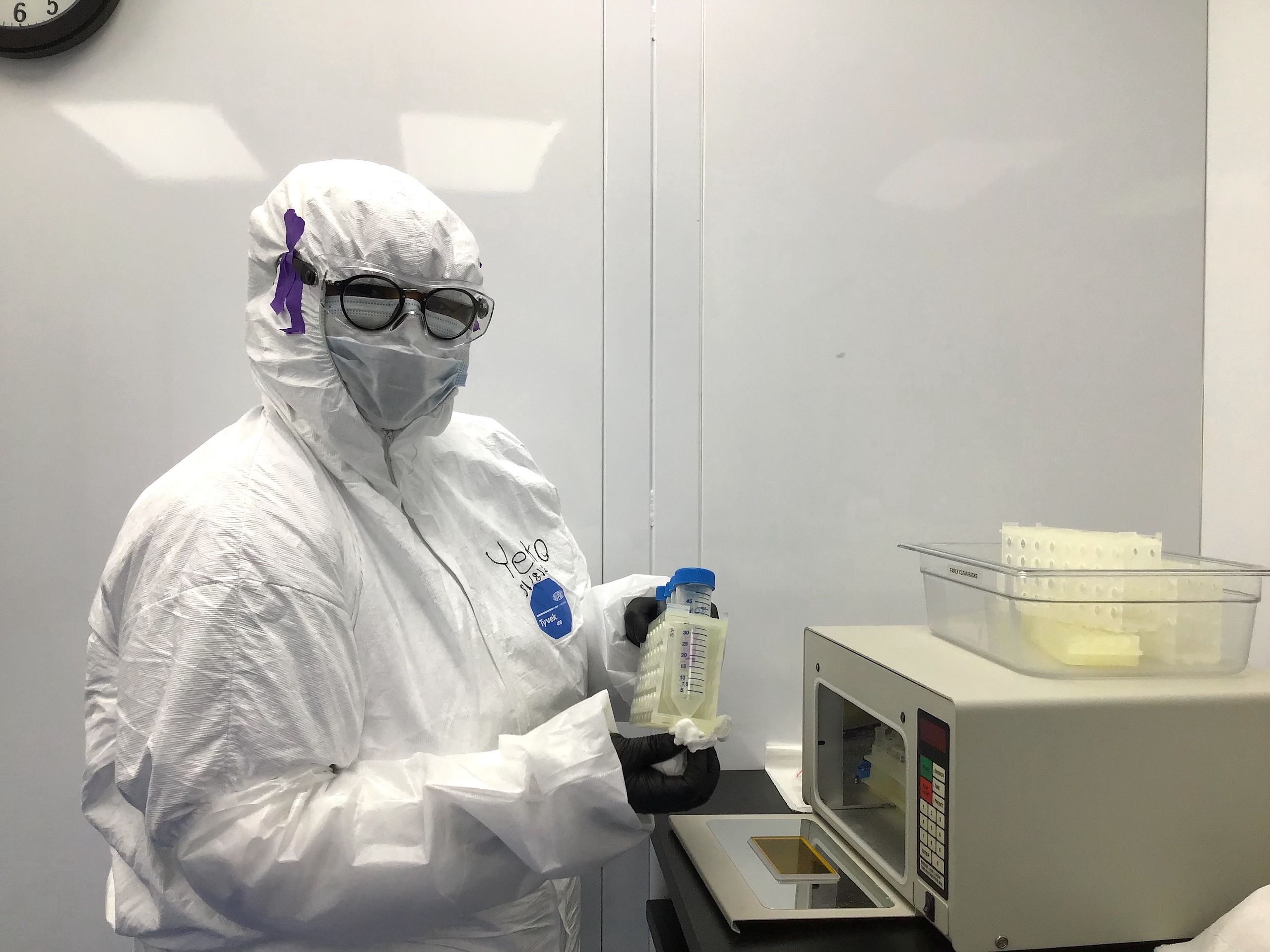

"With all the PPE gear on I feel like a scientist in a D.C. Comic," says graduate student Yemko Pryor, shown processing an ancient DNA sample. (Photos by Amanda Owings)
"With all the PPE gear on I feel like a scientist in a D.C. Comic," says graduate student Yemko Pryor, shown processing an ancient DNA sample. (Photos by Amanda Owings)

Pryor places a sample into a centrifuge, part of the purification process.
Pryor places a sample into a centrifuge, part of the purification process.

The ancient DNA is mixed with synthetic DNA and placed in a sequencing machine, which looks like a microwave oven. The synthetic strands act like a scaffold, allowing the ancient fragments to reassemble into chunks of 150 base pairs.
The ancient DNA is mixed with synthetic DNA and placed in a sequencing machine, which looks like a microwave oven. The synthetic strands act like a scaffold, allowing the ancient fragments to reassemble into chunks of 150 base pairs.
Graduate student Yemko Pryor, a Chicago native, loved science from a young age. As an undergraduate at Oberlin College, she majored in biology and Africana studies. “We can learn so many things from science and history that inform the present-day and our futures,” Pryor says. “Through Africana studies I started to understand more about my own history. I realized that those courses were actually important for my own health, in a way. They gave me the language and tools to express myself as a Black woman studying science at primarily white institutions.”
Although she started off planning a medical career, Pryor soon switched her focus to research after working in labs at Oberlin and through a National Institutes of Health Post-Baccalaureate Research Education Program at the University of Chicago.
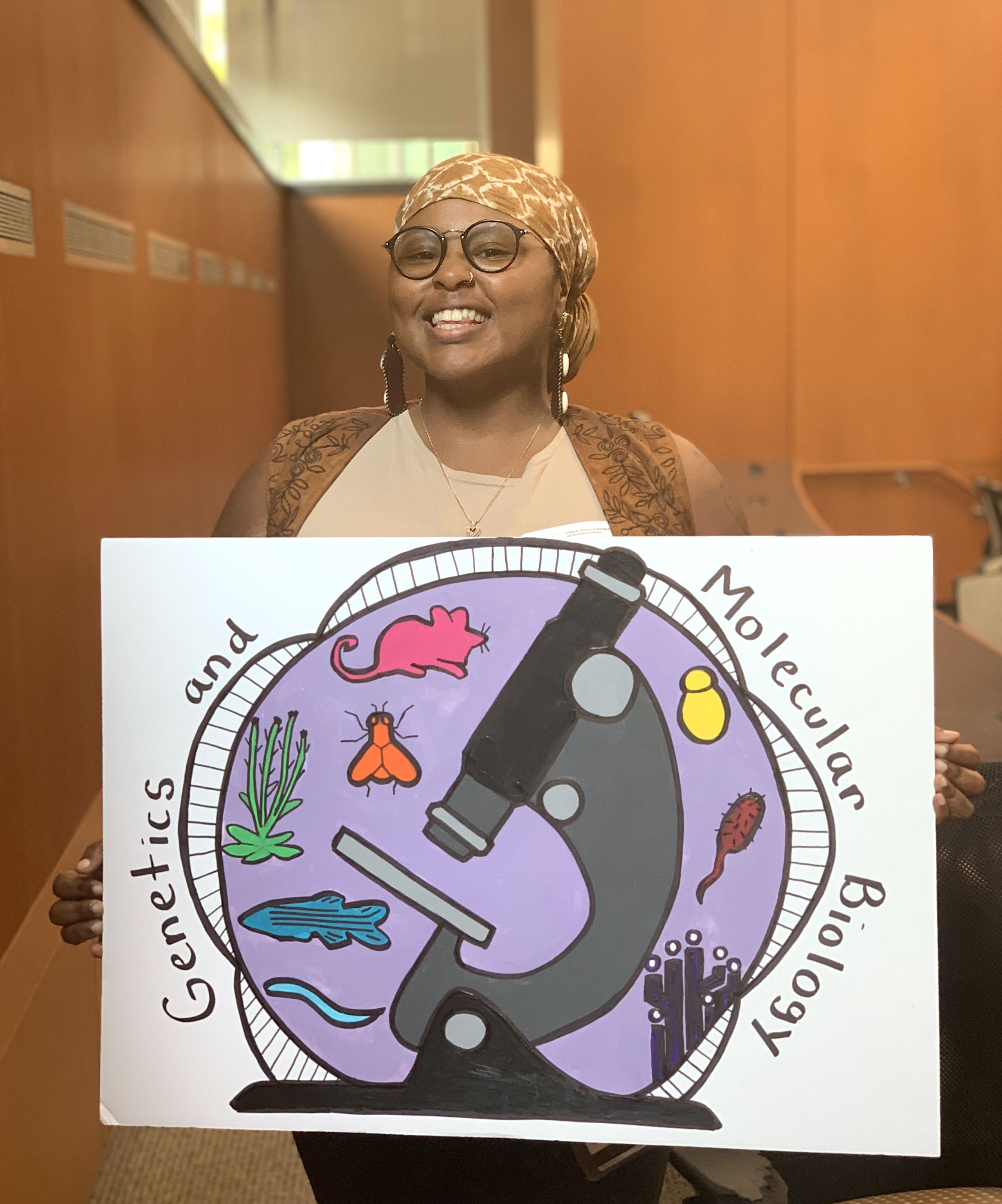
Graduate student Yemko Pryor plans a career as an educator and a human genetics researcher.
Graduate student Yemko Pryor plans a career as an educator and a human genetics researcher.
In the Emory lab, Pryor is gaining valuable technical skills in DNA extraction, isolation and analysis. “With all the PPE gear on I feel like a scientist in a D.C. Comic,” Pryor says. “It’s challenging but also really cool work.”
Meanwhile, she’s putting together her PhD dissertation project, working with collaborators to compile the biological histories of individuals from ancient Africa and those of African descent who lived in the Americas hundreds of years ago. “The goal is to assemble a comprehensive timeline of genetic variation of people in the Americas whose ancestors were forcefully migrated through the slave trade,” she explains.
Ultimately, Pryor hopes to gain an in-depth understanding for how trauma, stress and other environmental factors may alter the epigenome — the chemical compounds of the genome that affect how genes are expressed. Such changes can potentially affect susceptibility to disorders such as cancer and cardio-vascular disease. “I would like for my research to benefit the health of modern-day people of African descent,” she says.
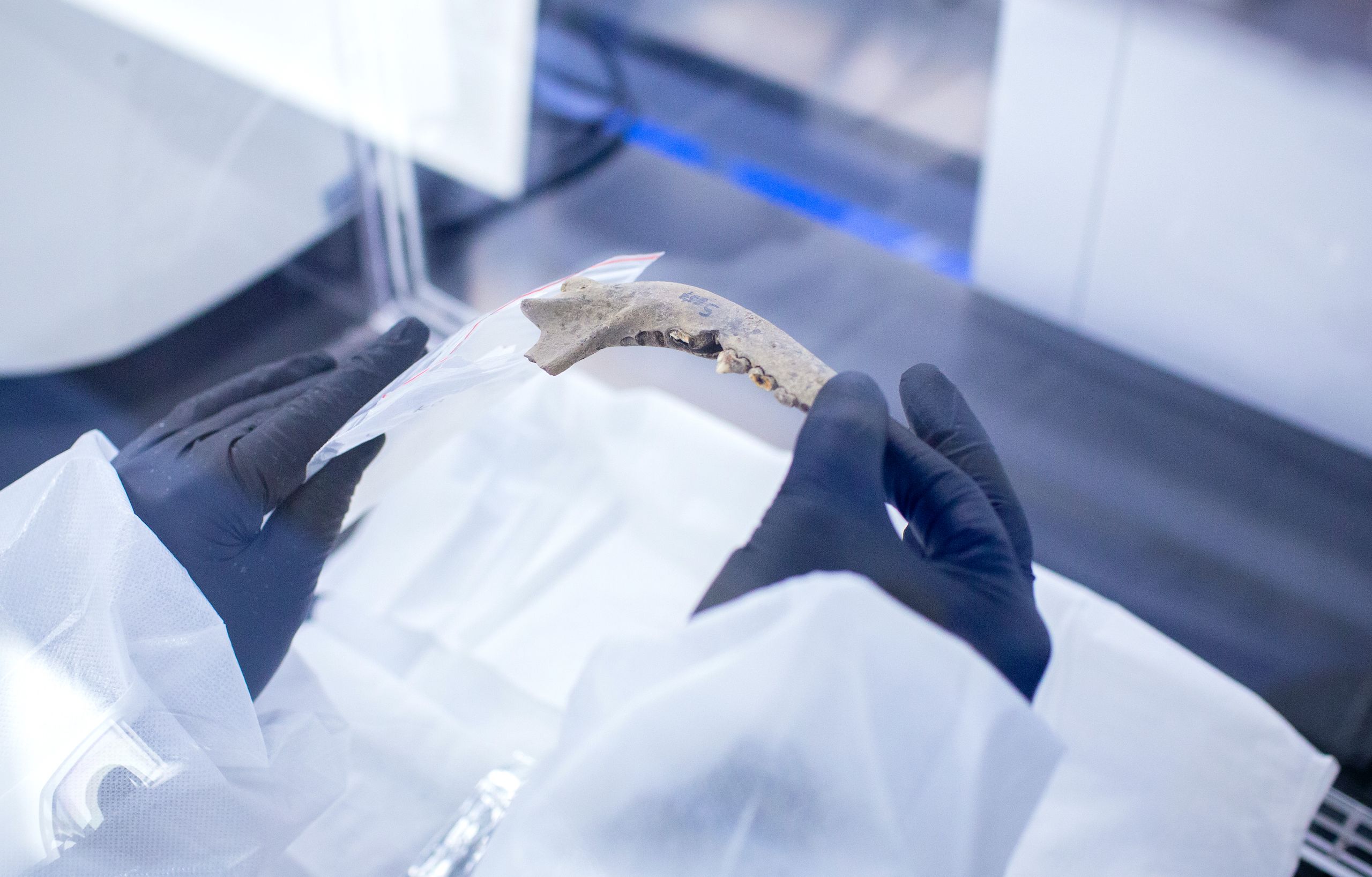
While the Emory lab is primarily focused on human populations that are under-represented in ancient DNA research, Lindo is also interested in the evolutionary histories of domesticated animals. He visited museums around the world to gather ancient remains of dogs. The lab will now extract and analyze the DNA from canine samples that are around 5,000 years old.
“Ancient DNA is special because it gives you a transitory genome between the wolf and how modern dogs came to be,” he says. “How did we go from wolves to having all these different dog breeds with special traits? How did that happen genetically? We still don’t know.”
Exploring these questions in dogs, our close companions, may also help answers questions about humans, he adds.
Lindo is open to myriad ways to explore the mysteries surrounding evolution and natural selection. “Students who work in my lab can choose from a great variety of projects,” he says. “Ancient DNA research is such a growing field. This new era of the field, with more powerful tools, is only about 10 years old. Many more amazing discoveries are still in front of us.”
To learn more:
The Lindo Ancient DNA Lab,
Emory Department of Anthropology
For media inquires:
Carol Clark
carol.clark@emory.edu

